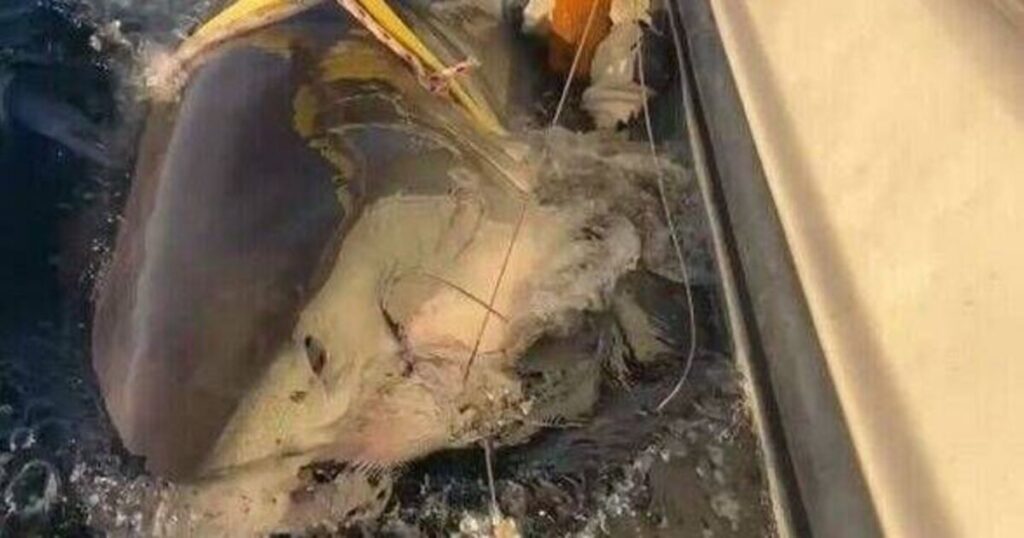Scientists have made an extraordinary discovery, capturing the largest Great White shark ever recorded in the Atlantic. The massive 1,653lbs beast, known as ‘Contender’, could potentially help researchers unravel one of the greatest mysteries surrounding the world’s largest known predatory fish.
The nearly 14 feet long shark was initially tagged by a marine research group in January, approximately 45 miles off the southeast coast of the US. Just last week, he was found in the northern waters of the Gulf of Saint Lawrence, near Canada’s Labrador Peninsula, in the northern Atlantic Ocean.
According to OCEARCH researchers, these findings make Contender “one of the furthest northern pinging sharks that we’ve had.” The news emerges as Great White shark seen just yards from swimmers at beach in drone footage.
Chris Fischer, OCEARCH founder and expedition leader, stated: “Only a couple have made it that far north. An animal like that, spending the summer and fall up north – what are they doing? Well, a lot of what they’re doing is preparing for the winter.”
Fischer explained that Contender is “putting a lot of pressure on the seals, eating seals constantly, swimming in front of seal colonies, trying to put on some weight before he proceeds back down to Florida for the oncoming winter”, reports the Express.
While Contender’s presence might spell trouble for seals, it also benefits the broader ecosystem.
Fischer added: “The byproduct of putting that pressure on the seals is really good, they’re guarding our fish stocks.
“We know that if the white sharks are in front of the seals putting pressure on them, they eat one-fourth as much per day.
“If that white shark’s not there, those seals go out and they wipe out all the fish,” he added.
The satellite tracker on the magnificent predator, thought to be around 30-years-old, only ‘pings’ when its dorsal fin breaks the water’s surface.
He emerged near Natashquan, Canada, on September 29 and then there was a “rare ping” from the Gulf of Saint Lawrence on October 2.
However, the movement was detected by a “Z-ping” – a signal too faint to determine his exact location due to only a brief surfacing.
Contender’s journey north demonstrates the remarkable adaptability of great white sharks, Mr Fischer added.
“White sharks have the ability to warm themselves and survive in cold water, but they have to have a lot of food,” he explained.
“Like horses in winter – as long as they have food, they’re fine. If they run out of food, they freeze very quickly.”
Scientists hope Contender can play a crucial role in expanding the great white population and also solve the mystery of where they mate.
“We decimated the shark population so badly in the 60s, 70s and 80s – we got down to 9% of our population,” Mr Fischer said.
“These big mature males are hugely important because they can help us understand where and when mating is occurring.”
The expert stated: “There’s never been a white shark mating site identified anywhere in the world in any one of the nine populations. It would be a first.”
Preliminary data indicates that waters off the southeast coast of the US could potentially serve as a mating ground.
Despite Contender’s colossal size, he could still grow larger, possibly reaching around 20 feet in total length.
“It’ll be really interesting to watch Contender this year,” Mr. Fischer commented.
“I want to know where Contender will be in March of 2026, in April of 2026. I think that could be a massive clue for identifying where they mate.”
Great white sharks can live for over 70 years and are currently listed as vulnerable to extinction.

